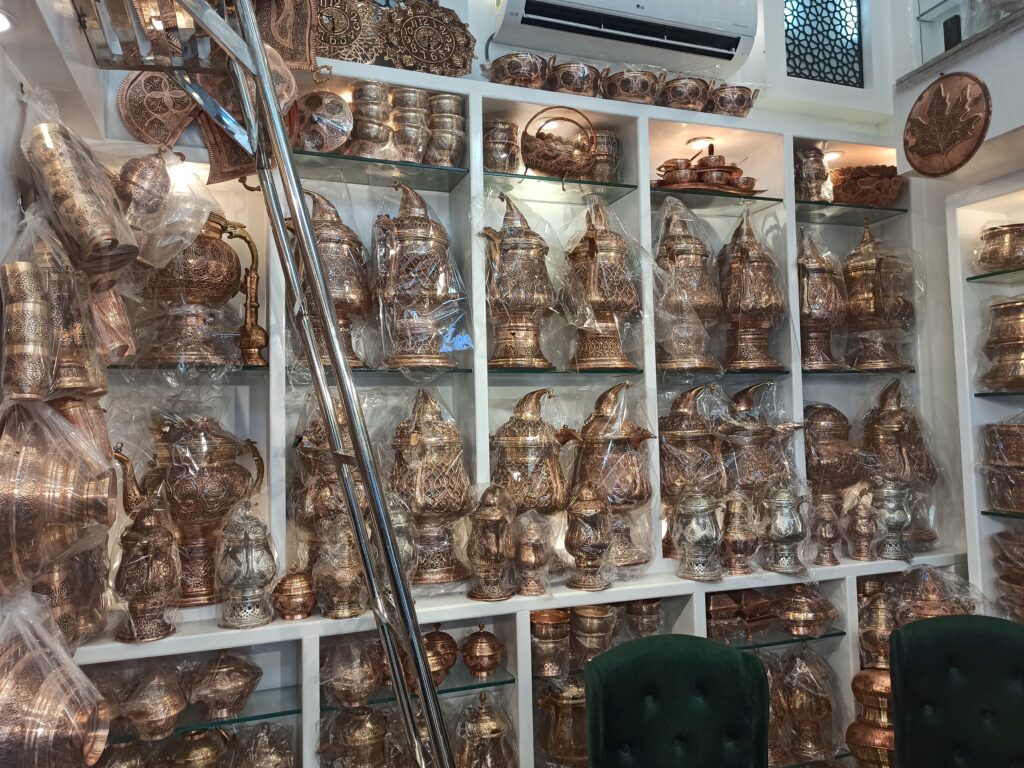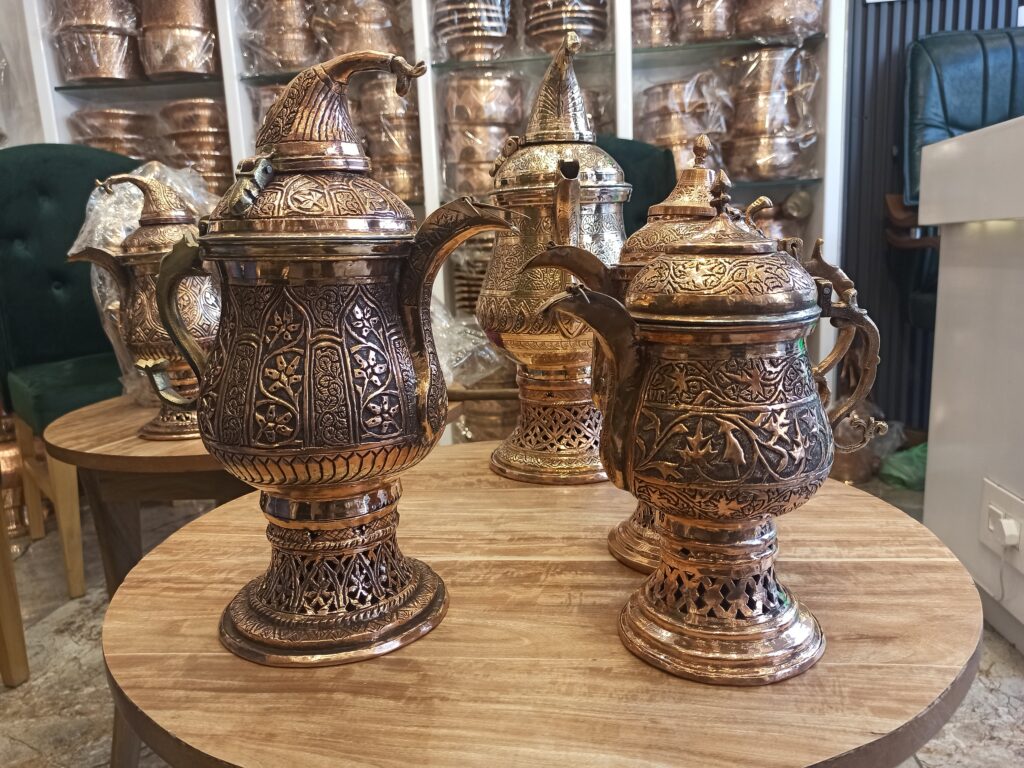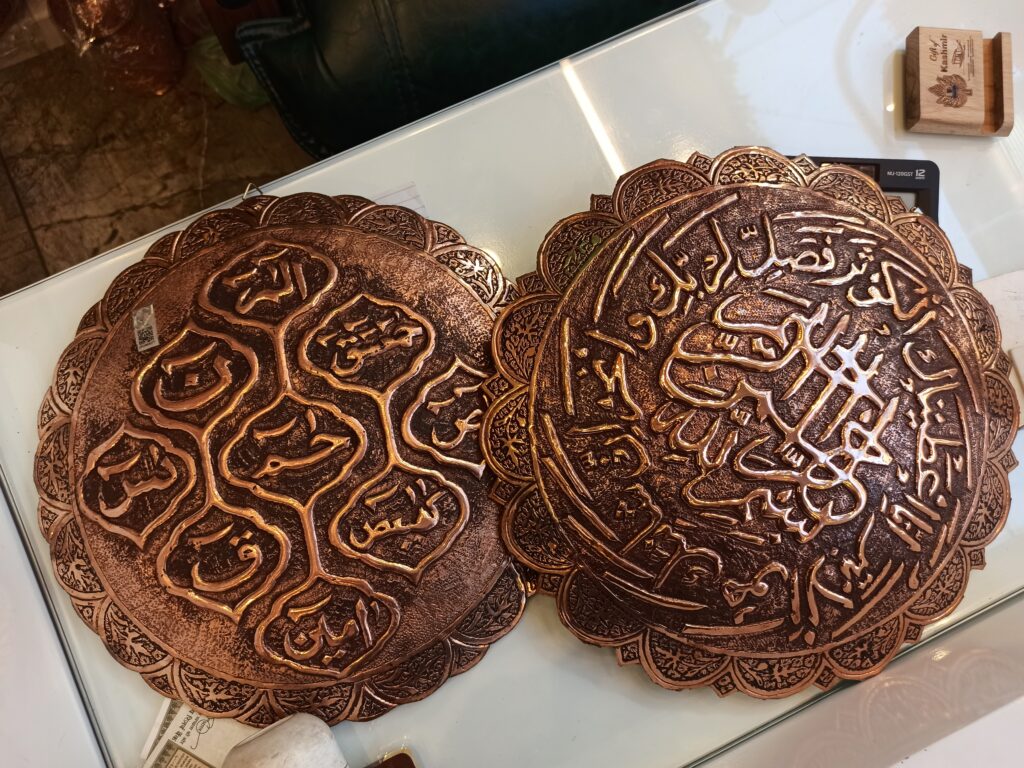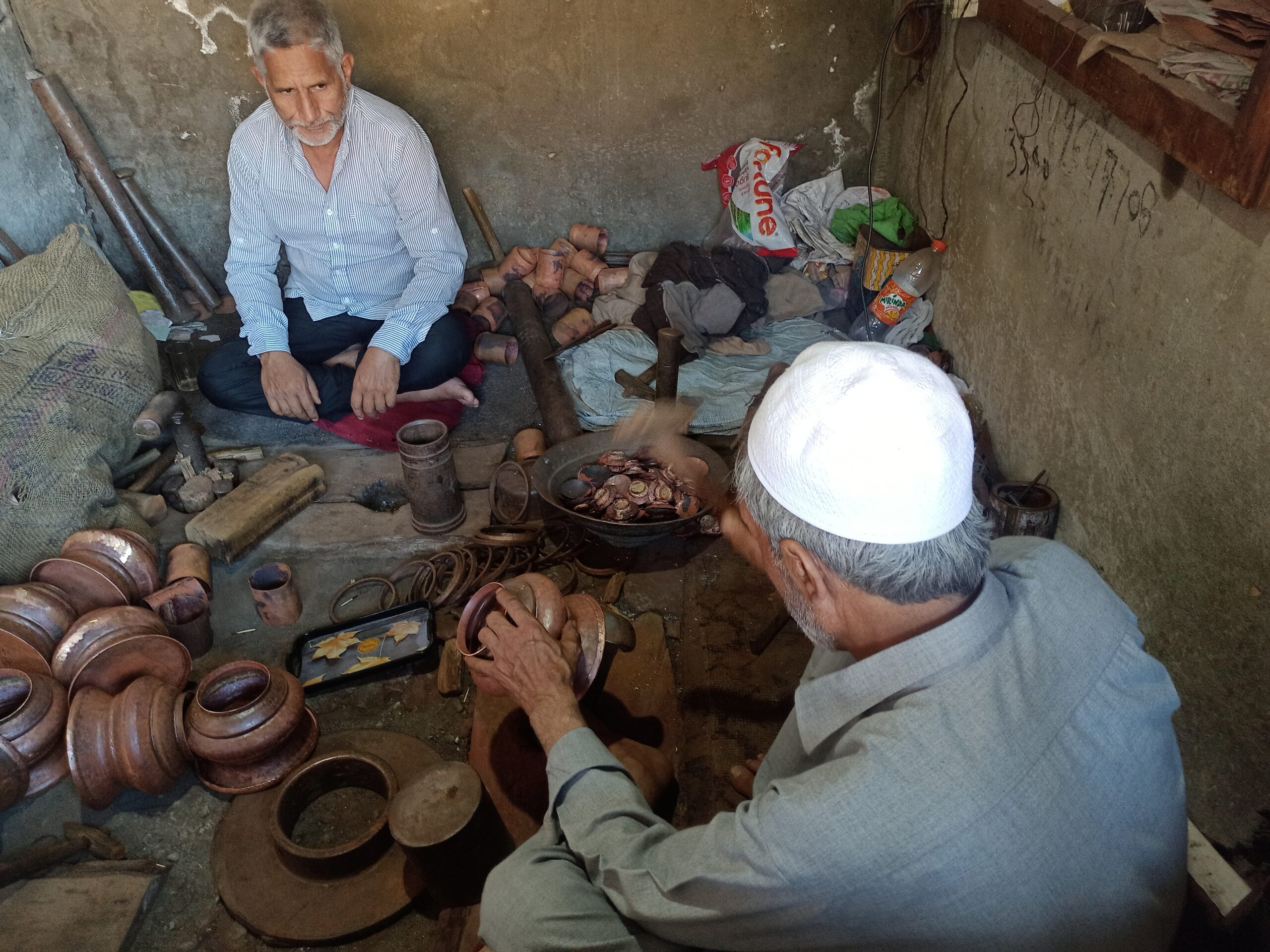A mesmerizing journey into the heart of Kashmir’s Copper Artistry, where skilled artisans stand as the guardians of a fading legacy. Refusing to let their ancestral craft be forgotten, these passionate craftsmen are on a mission to preserve the region’s rich cultural heritage for generations to come.
By Tauheed Ahmad
Once a thriving hub of exquisite copper craftsmanship; the picturesque valley of Kashmir has witnessed a decline in its traditional art forms due to various factors over the years. However, tucked away in the narrow lanes of Srinagar; passionate artisans are determined to revive the legacy of Kashmiri Copper Works, preserving the region’s cultural heritage for generations to come. From Decline to Resurgence
The clash between age-old craftsmanship and modern automation has sparked a battle for survival, as these artisans strive to preserve their heritage and showcase their innovative ideas in a world dominated by mass-produced goods. This is the story of Kashmiri copper artists, determined to reignite the flame of their fading tradition and prove that the beauty of handmade art can never be replaced by machines.

Meet Mohammad Yousuf Kakroo, a master craftsman and President of the Kashmir Copper Workers Trade Union (KCCWTU) —- with weathered hands and a gleam in his eyes. For over four decades, Yousuf has dedicated his life to the art of copper work, learning the delicate techniques from his forefathers. He remembers the bustling workshops and vibrant marketplaces of his youth, where artisans like him would craft intricate copper utensils, decorative pieces, and other exquisite items.
“Gone are the days when copper was confined to household items. Today, I sell exquisite lamp shades, phone holders, water bottles, and souvenirs that captivate the modern eye”
As time passed, the demand for traditional copper crafts dwindled, giving way to modern alternatives and mass-produced items. Many artisans had to abandon their ancestral crafts and seek alternative livelihoods. But Yousuf”s passion burned strong, and he refused to let this valuable part of Kashmir”s cultural heritage fade away.
Driven by the desire to revive the art form and create opportunities for fellow artisans, Yousuf, and other like-minded craftsmen started a mission to revitalize the traditional craft and reintroduce it to the world with their innovation into their artistry.
Addressing the concerning issues in the craft industry, Yousuf said that despite adding modern touch to our traditional craft, we face the challenge of unscrupulous craftsmen forging our unique designs and carving its replica through machine design templates procured from outside J&K.
This unethical practice creates confusion among buyers, who struggle to differentiate between handmade and machine-made products. It”s crucial to uphold transparency and protect the authenticity of our craft, he added.

As workers in the copperware industry, we wholeheartedly welcome the QR Code initiative by the government for our products. It is a much-needed step towards preserving out traditional craftsmanship. The copper craftsmanship Association”s recognition of this step as the only way forward to tackle machine-made copper wares in the market—which is truly encouraging, Hilal Ahmad Bafanda, Vice President KCCWTU.
Stressing the significance of protecting the authenticity of handmade crafts, Hilal Ahmad says “Essential steps are needed to counter the dominance of machine-made production to preserve the integrity of our craft’’.
However educating buyers about the value of authentic handmade products is equally necessary to quell the dominance of machine production, he added.
While highlighting the proud moment of Kashmiri craftsmen during the G20 meeting in Kashmir, Hilal Ahmad said that the delegates were highly impressed and captivated by the skill and artistry on display and filled with a sense of pride for the cultural heritage presented during the summit.
“This accomplishment is a testament to the importance of safeguarding our artistic heritage. When art is in safe hands it flourishes and captivates the world”, Hilal Ahmad said.
“A must have ware in every Kashmiri house is embracing the winds of change, I have expanded my craft beyond the boundaries of tradition, infusing modernity into every piece I create”
Blending tradition with modernity by infusing contemporary and unique designs, John Mohammad Halwai, a copper worker emphasizes that as a craftsman, he strives to push the boundaries of copper artistry by introducing unique and contemporary designs.
“A must have ware in every Kashmiri house is embracing the winds of change, I have expanded my craft beyond the boundaries of tradition, infusing modernity into every piece I create”, Halwai said.
With unwavering determination and commitment to bringing a fresh perspective into the art, Halwai says “As a craftsman, I am not bound by the limitations of the past. I strive to push the boundaries of copper artistry, introducing unique and contemporary designs”.
Over the years, the world of copper craftsmanship has undergone a remarkable change, and people are the forefront have also embraced change and adapted their offerings to suit the modern sensibilities.
Suhail Ahmad, a shop owner as he warmly welcomes visitors to his shop, reflects the evolution of copper’s role in contemporary living.
“Gone are the days when copper was confined to household items. Today, I sell exquisite lamp shades, phone holders, water bottles, and souvenirs that captivate the modern eye”, Suhail said.
Being keen to the shifting preferences of the customers, Suhail says “By embracing modernity, I have transformed my traditional business into a thriving venture, attracting diverse customers seeking the fusion of heritage and innovation,”
However, the scale of machine made production is staggering; they can churn out thousands of items overnight. This mass production further exacerbates the challenges of distinguishing between genuine products and replicas among customers, he added.
While revealing the strategy to curb the machine-made products in the market, the Director of handicrafts, Mehmood Shah said that we are not only safeguarding traditional crafts but ensuring their continued relevance in a rapidly changing world, Director said.
Emphasizing the importance of QR codes, he further said that by embracing technology, we are empowering the legacy of our traditional crafts for generations to come, he added.
These codes make a significant difference for customers in recognizing the authenticity of handmade products. By scanning the codes, customers can easily verify the originality of the items they are purchasing, Director said.

This empowers customers to make informed choices and supports the artisans who dedicate their skill and passion to create these unique, handmade products, he added.
While informing on the implementation process of QR codes in Srinagar district, the Director said that starting in Srinagar–the heart of the copperware industry–we set the stage for revolution. As demand echoes from other districts, we would expand our reach.
Pertinently, the Government of Jammu and Kashmir recently took a significant step towards recognizing and preserving the crafts of the region. They notified 21 more crafts from Kashmir as “Notified Handicrafts,” acknowledging the scores of artisans associated with these crafts. Among the newly recognized crafts were Copperware Engraving and Copperware Sakhta, which added to the list of traditional art forms already safeguarded by the government.
The inclusion of Copperware Engraving and Copperware Sakhta in the list of Notified Handicrafts is a welcome step from the government. Also this was a long pending demand of the people associated with business.
“It brought a renewed sense of validation and encouragement for the artisans dedicated to these crafts. It affirmed the cultural and historical significance of their work and provided them with increased visibility and support from government initiatives, Mohammad Yousuf, President KCCWTU said.

With this official recognition, the artisans engaged in Copperware Engraving and Copperware Sakhta experienced a renewed sense of pride in their craftsmanship. The government”s acknowledgment not only helped protect their traditional skills from being lost but also opened doors for opportunities, such as access to financial assistance, training programs, and marketing support, he added.
The artisans, who had been carrying the torch of these crafts for generations, felt a deep sense of appreciation and gratitude for the government’s recognition. They saw it as a testament to the resilience and importance of their craft in preserving Kashmir”s cultural heritage, Hilal Ahmad Bafanda, Vice President KCCWTU said.

Leave a Reply